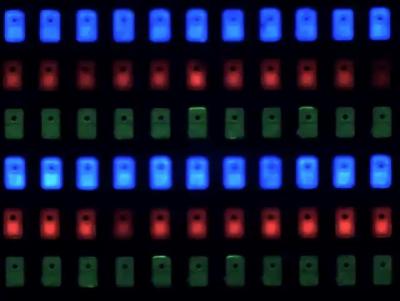PlayNitride began sampling micro-LED panels, shipping these to 10-20 potential customers in Q4 2017. The company's chairman and CEO, Charles Li, says that 5-6 of these customers are continuing the developing of micro-LED modules based on these panels.

In September 2017 we reported that Charles Li said that Micro-LED displays are not as challenging as originally expected, and the company aims to start trial production of Micro-LED displays in the second half of 2017 - it's great to see the company progressing as planned. PlayNitride says that it achieved mass transfer and placement yield rates of over 99% in its lab.
In PlayNitride's R&D setup, it takes about 10 seconds to transfer and place 200,000 LEDs - which means that a 5" panel will take only 10 minutes to produce. However the cost for a single smartphone panel could reach about $300 - much higher than the cost of even the highest-end flexible OLED. Possible applications where Micro-LED displays could succeed commercially at this stage include smartwatches, VR / AR, automotive and transparent displays.
In April 2017 it was rumored that Samsung Display is set to acquire PlayNitride for around $150 million. The deal is not final, but last month it was reported that the two companies are at the final stage of their talk. Meanwhile Samsung signed a long-term agreement to co-develop Micro-LED technologies with China's largest LED producer, San'an Optroelectronics.


Comments
Micro-LED Computer Monitors?
Since OLED isn't doing well in the computer monitor space, is there much of a chance of seeing a Micro-LED computer monitor? Is it technical limitations that would hold back production of computer monitors, or is it a general lack of interest in the market?
Everyone seems focused on smartphone displays, presumably because that's a much bigger market, so computer monitors seem to get very little investment.
Micro-LED Computer Monitors?
Since OLED isn't doing well in the computer monitor space, is there much of a chance of seeing a Micro-LED computer monitor? Is it technical limitations that would hold back production of computer monitors, or is it a general lack of interest in the market?
Everyone seems focused on smartphone displays, presumably because that's a much bigger market, so computer monitors seem to get very little investment.